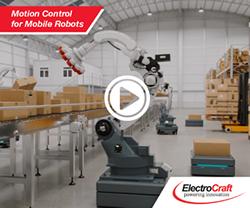No Electrical Outlet, No Problem for UMD Robotic Bird That Harvests Solar Energy
Robotic bird's solar cell wings feed on the sun, provide energy for the long haul
COLLEGE PARK, Md., Oct. 8, 2013 -- Small robotic birds are showing lots of promise for tasks such as monitoring the environment and conducting surveillance. But one current drawback they have is the amount of time they are able to stay aloft. Because of the birds' light weight and small size, the tiny batteries used to power them deplete in just a few minutes.
University of Maryland Professors S.K. Gupta and Hugh Bruck and their students in the Maryland Robotics Center are working on a solution that will allow longer flights and battery recharging in remote places without electrical outlets. The Clark School of Engineering team has developed and demonstrated a new version of its Robo Raven micro air vehicle (MAV) that incorporates solar panels in its wings.
While the solar panels do not yet produce enough energy to power Robo Raven III in flight (they produce around 3.6 Watts while Robo Raven needs around 30 Watts to fly), they are effective in charging the MAV's batteries when it is stationary.
Gupta notes that the development team envisions Robo Raven flying "far away from civilizations" during long missions and needing "a way to 'feed' itself" on its journeys.
Because Robo Raven's large wings have enough surface area to create a usable amount of solar energy, the team decided to incorporate flexible solar cells into them. The captured solar energy is then used to supply Robo Raven's onboard batteries.
"These new multi-functional wings will shape the future of robotic birds by enabling them to fly longer, farther, and more independently because they will be getting their power from the sun," says Mechanical Engineering Ph.D. student Luke Roberts, a member of the Robo Raven team.
The underlying material of the flexible solar panels is different from that used in the previous version of Robo Raven. That meant the team needed to design new wings and develop a new additive manufacturing process to fabricate them, Gupta says.
"We still need to make significant improvements in solar cell efficiency and battery energy density to replicate the endurance of real ravens in Robo Raven III," Gupta says. "But the good news is that Robo Raven III has already demonstrated we can fly with a solar cell and battery combination. Now that we've successfully taken this step, swapping new technologies that are more efficient should be relatively simple."
Gupta has been working on flapping-wing robotic birds for the better part of a decade. His team first successfully demonstrated a flapping-wing bird in 2007. Robo Raven, the first flapping-wing MAV with independent, programmable wings, was introduced earlier this spring. Gupta holds a joint appointment in Mechanical Engineering and the Institute for Systems Research, and Bruck is a Mechanical Engineering professor.
This work was funded in part by the Air Force Office of Scientific Research.
To see Robo Raven in action, visit: http://www.youtube.com/umdrobotics
Featured Product

ElectroCraft's Motion Control for Mobile Robots
ElectroCraft is showcasing its award-winning mobile robot technology including their powerful and compact wheel drives, high-torque-density brushless DC motors, precision linear actuators as well as servo motor drive technology at a variety of conferences and tradeshows including the Boston Robotics Summit. Robotics Summit is the premier symposium for the sharing of ideas, technology, and market developments for robotic technologies across industries. Beyond a showcase and pitch of product, ElectroCraft is eager to participate in the collaborative discussion of challenges and opportunities that will shape the near and long-term robotic marketplace.
